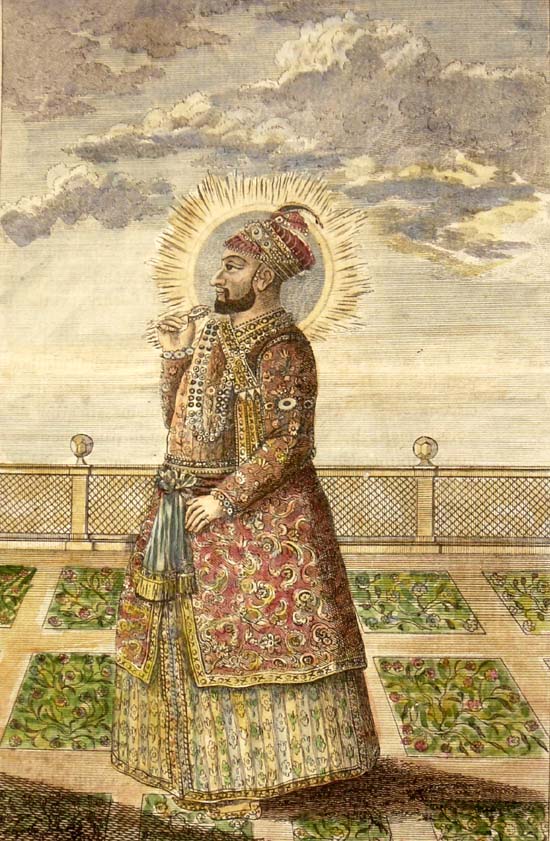

"Hyder Ali," a steel engraving from the 1790's (with modern hand coloring)
Source: ebay, July 2007

"Engraving of Hyder Ali (c.1722-1782) by William Dickes, 1846"
Source: http://en.wikipedia.org/wiki/Haidar_Ali
(downloaded Feb. 2007)
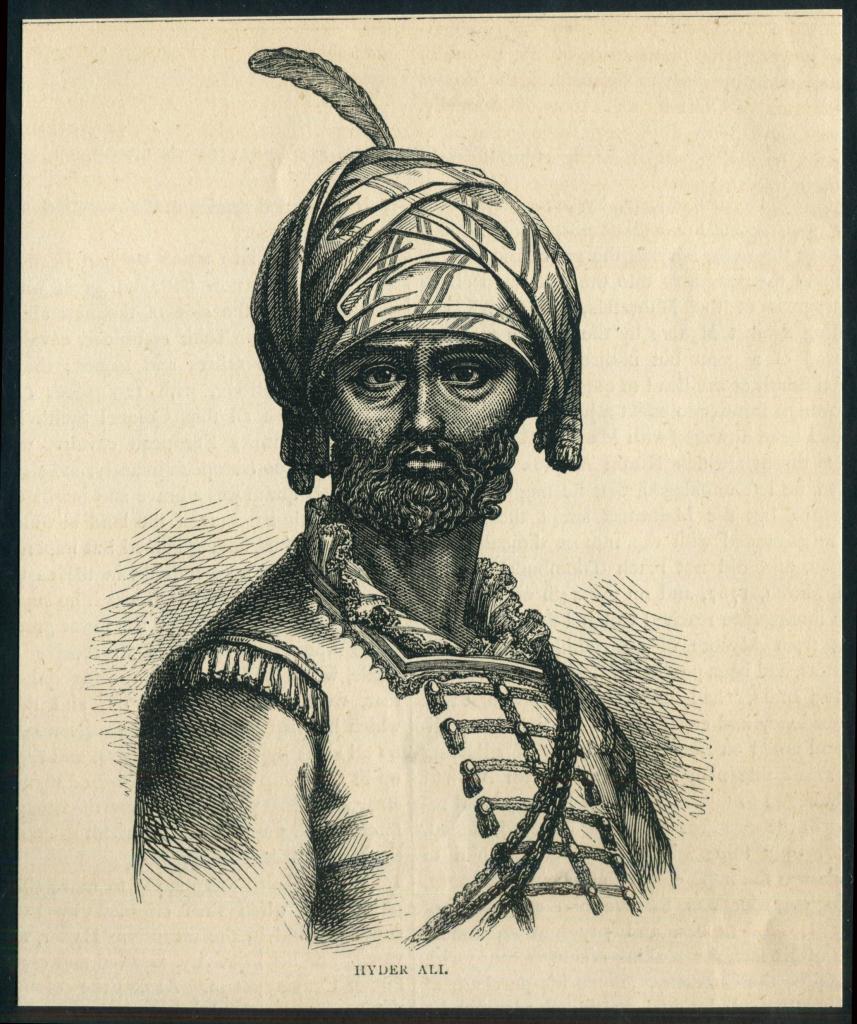
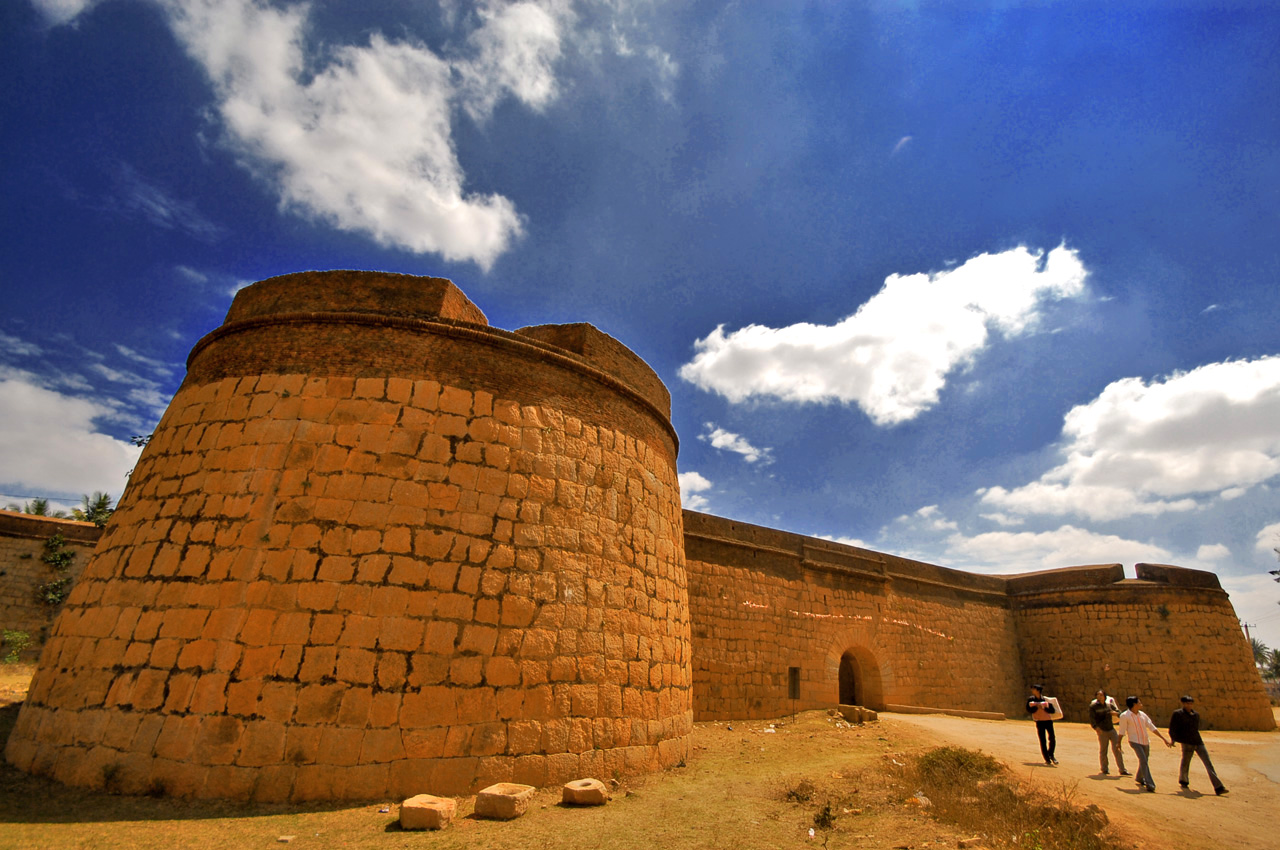
During the attack on Devanahalli Fort in 1749, Haidar Ali's military abilities caused the Raja of Mysore to give him an independent command-- and from then on nothing stopped his rise; this fort is probably where Tipu was born (1750)
Source: http://www.flickr.com/photos/kartz/370964110/
(downloaded Feb. 2007)
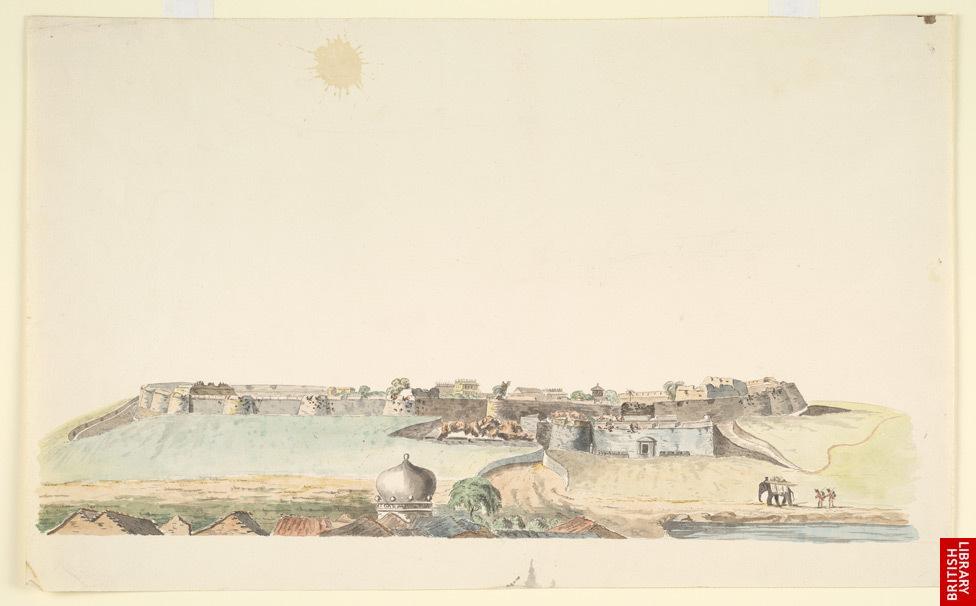
Haidar Ali reconstructed this once-mud fortress in stone: *The fort of Bangalore, from a village outside the main gate; a watercolour, 1790-92* (BL)
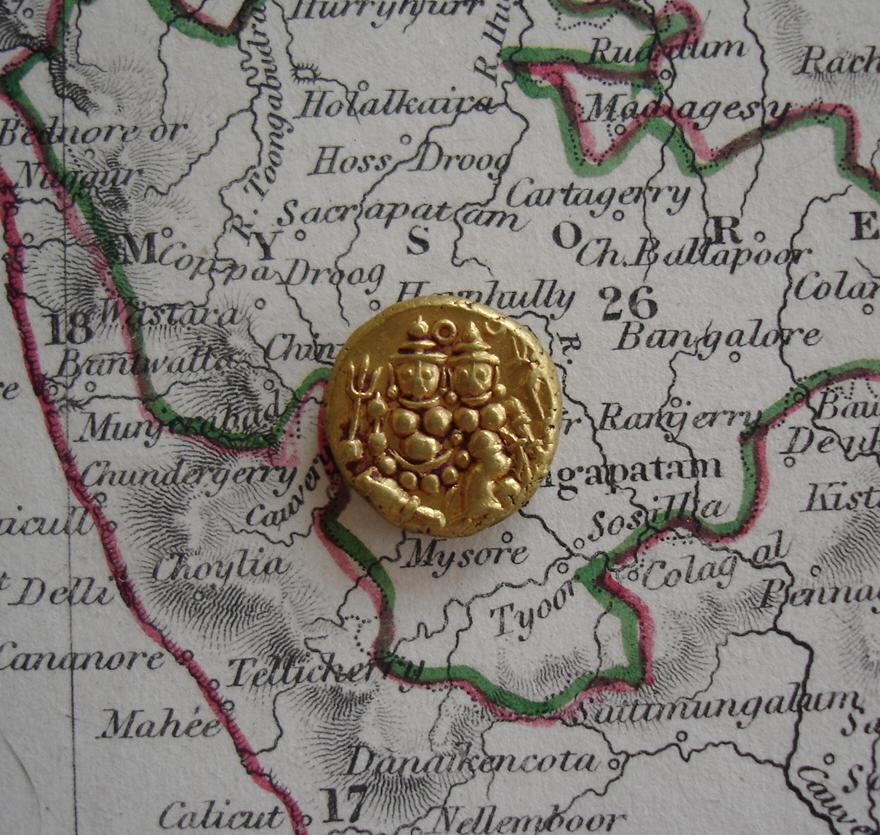
A "Haidar Ali gold pagoda," minted during his reign and thought to depict Shiva and Parvati
Source: http://www.flickr.com/photos/celeste33/376870492/
(downloaded Feb. 2007)

*"Kistnagherry [Krishnagiri]," by Captain Alexander Allen, 1794* (BL); this fort was besieged in the first Anglo-Mysore war in 1768, and finally surrendered to the English, who held it briefly

*"The British Army encamped below the rock of
Sholingarh. 28 September 1781," a watercolor by Samuel Davis*
(BL)-- Sholingarh was the scene of the last decisive British
victory over Haidar Ali;
also: *"The British Army marching below the rock of
Sholingarh. 27 September 1781"*
== Indian Routes index == Indian Routes sitemap == Glossary == FWP's main page ==